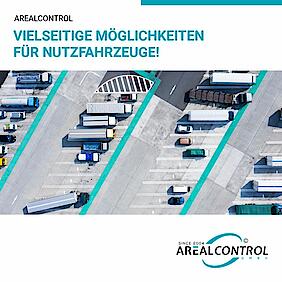There are two basic types of telematics systems: OEM telematics and retrofit telematics. This specialist article highlights the differences, advantages and disadvantages of these two systems.
OEM telematics
OEM telematics is installed directly by machine and equipment manufacturers. These systems are specifically tailored to the machines and often offer extensive functions regarding technical data and sensors in commercial vehicles or construction machinery, in particular machine performance and maintenance.
Advantages:
- OEM telematics has been developed by machine manufacturers specifically for their own products, so integration and operation is simple and seamless.
- Because the system is integrated into the machine from the start, it is often very accurate and can provide precise data.
- OEM telematics can also typically monitor machine performance and maintenance needs, which can help minimize downtime and extend machine life.
- Another advantage of OEM telematics is that they are often integrated into the manufacturer's service processes, thus simplifying scheduling for maintenance and inspection.
Disadvantages:
OEM telematics is often more expensive than aftermarket telematics.
If a construction company uses different machines from different manufacturers, multiple telematics systems may need to be used, which can lead to compatibility issues.
Logging into multiple OEM platforms and using the different screen layouts is often perceived as annoying.
OEM telematics also cannot be easily retrofitted to older machines, meaning older machines may not be equipped with the latest technologies.
Retrofit telematics
Retrofit telematics is installed after the vehicles, machines or devices are purchased.
These systems are often cheaper than OEM telematics and offer similar functionality, in particular automated billing, time tracking per machine and person as well as per construction site/job site and monitoring of machine performance and maintenance.
Advantages:
- Retrofit telematics can be installed on older machines, meaning companies are not forced to upgrade their entire fleet to use telematics.
- Because aftermarket telematics is developed by third parties, it is often compatible with a wide range of machines and devices from different manufacturers.
- Aftermarket telematics systems are typically more cost effective than OEM systems. They can be installed on almost any device or machine, regardless of manufacturer. This gives companies more flexibility to choose the telematics system that best suits their needs.
Disadvantages:
- A disadvantage of retrofit telematics systems is simply the subsequent installation effort and scheduling.
- Another disadvantage is that they can sometimes be less accurate than OEM systems, as the latter are deeply integrated and retrofit systems have to obtain deeper technical data via CAN/FMS and OBD data (depending on the vehicle/machine type). . For aftermarket systems, accuracy depends on the quality of installation and configuration.
- Finally, the price of aftermarket telematics systems can be a disadvantage. While they are typically more cost-effective than OEM systems, installation and integration costs can increase due to the variety of machines and equipment on a jobsite. For smaller businesses with limited budgets, this can be a barrier to implementing the system and reaping the benefits of telematics.
In summary, it can be said that the disadvantages of retrofit telematics and whether they apply at all depend crucially on the competence of the provider. Long-standing and experienced telematics providers in particular already have the most important technical data from the CAN bus available for several thousand machine and vehicle types over several years of construction. This means that completely mixed fleets of vehicles and machines can be mapped on one platform. This in turn reduces costs for training, implementation and interfaces to further IT systems.
And, ultimately, it must also be clear that telematics solutions do not necessarily have to “blink and shine” like Las Vegas at night, but rather, based on the Pareto principle (80/20 rule), much more is gained than without telematics.
